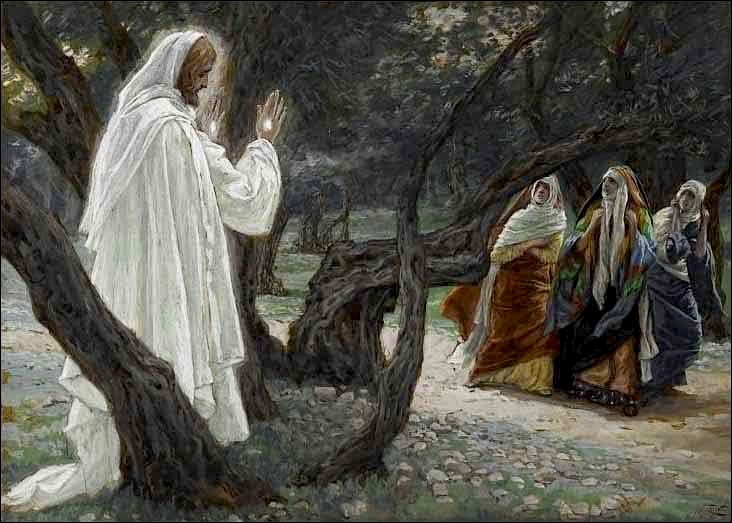Most of us think that vengeance is merely a vice. And, given improper intentions, or excess or misguided application, it can indeed be a sin and a vice. However, as we read in Scripture, “Vengeance is mine, says the Lord, I will repay” (Rom 12:19). Or again, as St. Thomas Aquinas notes, the scriptures assure: “Will not God avenge His elect who cry to Him day and night?” (Lk 18:7). But if vengeance is only a vice and an evil, then how can God attribute vengeance to himself. God does nothing evil. Hence in vengeance there is the possibility of virtue and that which is good. St. Thomas treats of vengeance under his treatise on Justice. Hence, vengeance is a special virtue in service of justice.
To be sure, only God is perfectly assured of using vengeance in a good way all the time. We ought to be slow to attribute vengeance as a virtue among ourselves except under very clear circumstances and proper dispositions. As usual St. Thomas does a very good job of spelling out the qualities and circumstances necessary for vengeance to be operative as a lawful and as a virtue:
Vengeance consists in the infliction of a penal evil (i.e. punishment) on one who has sinned. Accordingly, in the matter of vengeance, we must consider the mind of the avenger. For if his intention is directed chiefly to the evil of the person on whom he takes vengeance and rests there, then his vengeance is altogether unlawful: because to take pleasure in another’s evil belongs to hatred, which is contrary to the charity whereby we are bound to love all men. Nor is it an excuse that he intends the evil of one who has unjustly inflicted evil on him, as neither is a man excused for hating one that hates him: for a man may not sin against another just because the latter has already sinned against him, since this is to be overcome by evil, which was forbidden by the Apostle, who says: “Be not overcome by evil, but overcome evil by good (Romans 12:21).”
If, however, the avenger’s intention be directed chiefly to some good, to be obtained by means of the punishment of the person who has sinned (for instance that the sinner may amend, or at least that he may be restrained and others be not disturbed, that justice may be upheld, and God honored), then vengeance may be lawful, provided other due circumstances be observed. (ST II, IIae, 108.1)
And while the Scriptures quoted above generally refer vengeance to God, Thomas notes that it sometimes falls to those with authority to execute it on behalf of God:
He who takes vengeance on the wicked in keeping with his rank and position does not usurp what belongs to God but makes use of the power granted him by God. For it is written (Romans 13:4) of the earthly prince that “he is God’s minister, an avenger to execute wrath upon him that doeth evil.” If, however, a man takes vengeance outside the order of divine appointment, he usurps what is God’s and therefore sins. (Ibid, reply to first objection)
A further distinction made by St. Thomas is that it is often praiseworthy to endure injustice and wickedness directed against us personally. However, when the wrongs are directed against others and God, those with authority to use punishment or vengeance are more obligated to use it. He quotes psudeo-Chrysostom who says, “It is praiseworthy to be patient under our own wrongs, but to overlook God’s wrongs is most wicked.” (Ibid, ad obj. 2)
Perhaps it becomes clear that too many today who have authority to punish wrongdoing are unwilling to do it. And this leads to many vices proliferating in our culture. Children are widely spoiled and incorrigible. Crime is rampant in many of our cities where prosecutors refuse to punish crimes and return repeat-offenders to the streets. This leads to many grave violations against life, property and the dignity of persons. This is a defect of proper vengeance by those who have the authority and duty to execute it. St. Thomas lists to vices contrary to vengeance:
Two vices are opposed to vengeance: one by way of excess, namely, the sin of cruelty or brutality, which exceeds the measure in punishing; while the other is a vice by way of deficiency and consists in being remiss in punishing, wherefore it is written (Proverbs 13:24): “He that spareth the rod hateth his son.” But the virtue of vengeance consists in observing the due measure of vengeance with regard to all the circumstances. (ST II, IIae 108.2, ad obj 3)
In our times, cruelty and excess are not unknown, but being remiss in needed punishment is more widespread and, as noted, causes great harm by the consequent proliferation of sin. Vengeance is lawful and virtuous in so far as it tends to the prevention of evil. Clearly vengeance is a kind of forgotten virtue, indeed even a virtue often mislabeled as evil.
The problem of deficient punishment due sin, is an aspect of the general malaise regarding authority in our culture. While it is true that there is a notable resistance, even hatred of authority, it is also true that those who have authority are too reluctant to use it. Parents and teachers are reluctant, even fearful of teaching, disciplining and, where necessary punishing their children. Leaders and supervisors in the workplace are anxious in correcting employees or insisting on greater work quality, fearing legal actions, charges of racism, sexism, and many other “isms” and “phobes” in any number of increasing ways. Work productivity and excellence suffers and products and services due to others become deficient. Judges and prosecutors, as noted, have chosen in many places to ignore serious and repeated violations of law by often very dangerous individuals. Police are discouraged from enforcement and citizens are endangered.
All of this amounts to a sin against justice. It sins not only against the common good, but also brings about many violations of a personal nature against victims and also against perpetrators who, never experiencing proper correction and punishment run the strong risk of eternal damnation.
Vengeance, to be sure, is a delicate and “dangerous” virtue. Our anger and passion to avenge wrongdoing are unruly and easily excessive. However, we must reasonably engage this necessary virtue, showing patience where necessary but also a resolve to act when patience has run its course and the good of others and the justice of God requires it. God has consigned the duty to punish wrongdoing to those with the requisite authority and to do so with the good of souls in mind.
Vengeance, the forgotten virtue.










